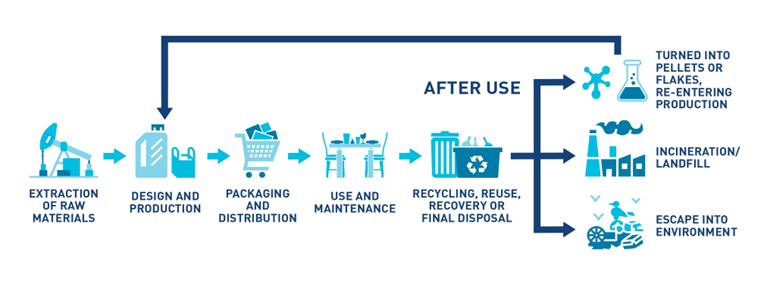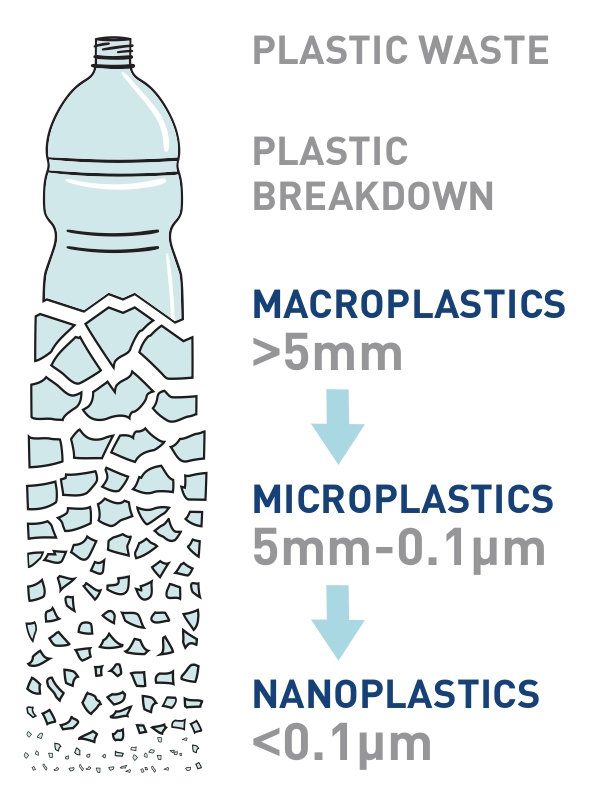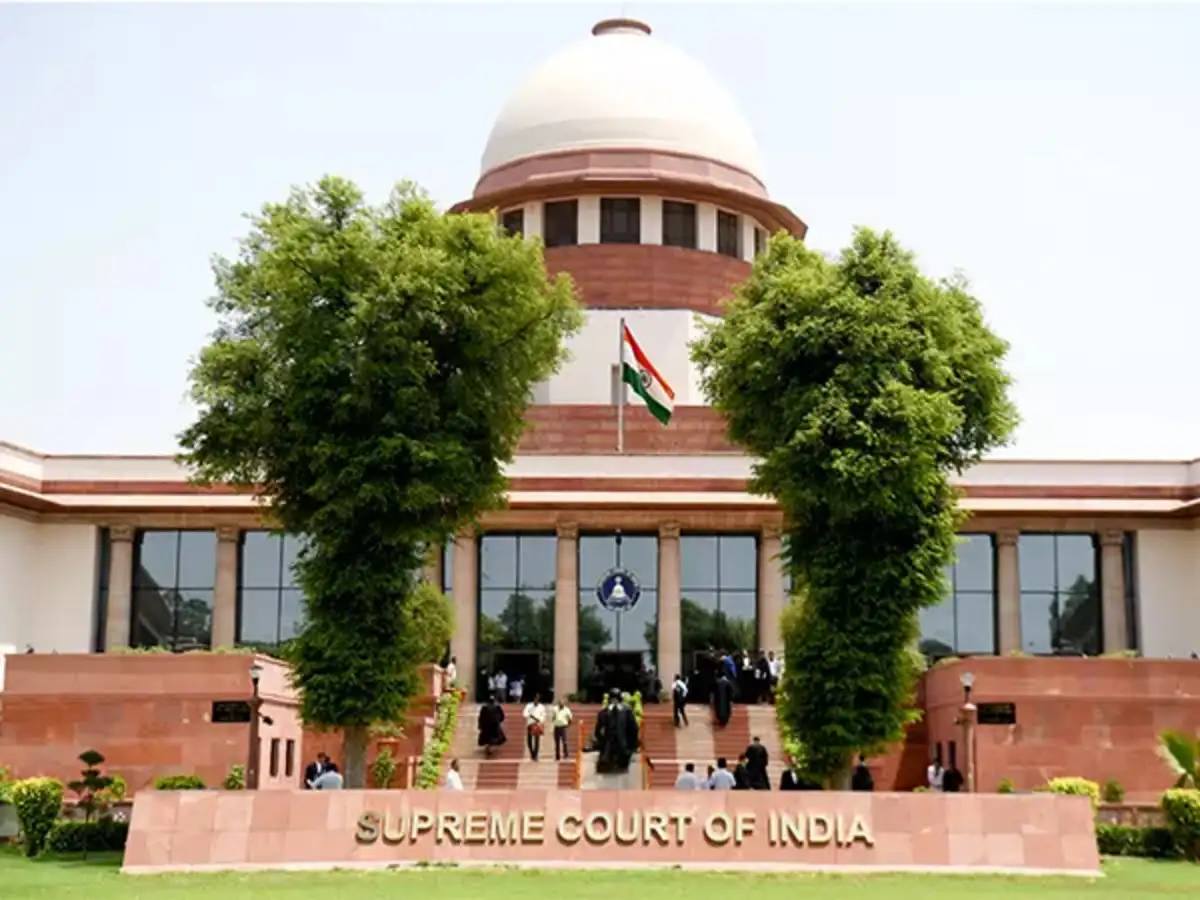- Courses
- GS Full Course 1 Year
- GS Full Course 2 Year
- GS Full Course 3 Year
- GS Full Course Till Selection
- MEP (Mains Enrichment Programme) Data, Facts
- Essay Target – 150+ Marks
- Online Program
- GS Recorded Course
- NCERT- First Ladder
- Polity
- Geography
- Economy
- Ancient, Medieval and Art & Culture AMAC
- Modern India, Post Independence & World History
- Environment
- Governance
- Science & Technology
- International Relations and Internal Security
- Disaster Management
- Ethics
- Current Affairs
- Indian Society and Social Issue
- CSAT
- 5 LAYERED ARJUNA Mentorship
- Public Administration Optional
- ABOUT US
- OUR TOPPERS
- TEST SERIES
- FREE STUDY MATERIAL
- VIDEOS
- CONTACT US
NEW CHEMICALS IN PLASTICS
NEW CHEMICALS IN PLASTICS
20-03-2024
- A new study has revealed the presence of at least 3,000 chemicals in plastic.
- The study was conducted by a team of European scientists and funded by the Norwegian Research Council.
- The study identified more than 16,000 chemicals in plastics, a quarter of which are considered hazardous to human health and the environment.
- The discovery has raised concerns about contamination and consumer safety.
- Plastic is found everywhere in everyday items like food packaging, toys, and medical devices.
Plastic Chemicals Exceed Previous Estimates
- The United Nations Environment Program (UNEP) had previously identified about 13,000 plastic chemicals.
- The findings highlight the urgent need for a comprehensive approach to tackle the growing plastic pollution crisis.
Addressing the Full Life Cycle of Plastics

- The world is facing a growing plastic pollution crisis, with approximately 400 million tonnes of plastic waste generated every year.
- To effectively solve the problem of plastic pollution, it is important to examine the full life cycle of plastics and address the issue of chemicals.
- Plastic chemicals can leach into water and food, posing potential health risks to consumers.
Response and Need for Transparency
- Regulation of chemicals used in plastics.
- The report's authors highlighted that tackling plastic waste alone is not enough.
Lack of Basic Information and Regulation
- This lack of transparency stems from complex value chains, where producers often do not have a clear understanding of the chemicals present in their products.
- Only 6% of the chemicals found in plastics are regulated internationally.
Global Efforts to Tackle it:
- The 1972 Convention on the Prevention of Marine Pollution by Dumping Wastes and Other Matter, also known as the London Convention.
- The 1996 Protocol to the London Convention.
- The 1978 Protocol to the International Convention for the Prevention of Pollution from Ships (MARPOL) was developed
- The United Nations Environment Program (UNEP) recognizes plastic marine debris and its capacity to carry harmful substances as one of the primary emerging issues impacting the environment.
- The GloLitter Partnerships (GLP), a project initiated by the International Maritime Organization (IMO) and the Food and Agriculture Organization of the United Nations (FAO) received initial funding from the Government of Norway
-
Clean Seas Campaign:
- The Clean Seas Campaign, which was launched by the United Nations Environment Programme in 2017, aimed to inspire a global movement to tackle the issue of plastic pollution.
- The campaign focused on reducing the use of unnecessary and avoidable plastics, including single-use plastics, and phasing out intentionally added microplastics.
India’s Efforts in Tackling Plastic Waste
- Single-Use Plastic Ban: India has prohibited the production, use, and sale of single-use plastics such as bags, cups, plates, and straws in various states.
- Extended Producer Responsibility (EPR): The Indian government has established EPR, holding plastic manufacturers accountable for managing and disposing of the waste generated by their products.
- Plastic Waste Management Rules: India enacted the Plastic Waste Management Rules in 2016, providing a framework for addressing plastic waste through measures like recycling and waste-to-energy initiatives.
- Plastic Waste Management Rules: The Plastic Waste Management Rules include guidelines for plastic waste collection, segregation, processing, and disposal, aiming to reduce the environmental impact of plastic pollution.
-
Plastic Waste Management (Amendment) Rules, 2022:
- The guidelines on Extended Producer Responsibility (EPR) were implemented alongside the prohibition of certain single-use plastic items.
- This ban encompasses the manufacturing, importing, stocking, distributing, selling, and using of carry bags made from virgin or recycled plastic with a thickness of less than 75 micrometers.
- Swachh Bharat Abhiyan: The Indian government established the Swachh Bharat Abhiyan, a national cleanliness initiative that involves the collection and disposal of plastic waste.
- Plastic Parks: India created Plastic Parks, specialized industrial hubs for the recycling and processing of plastic waste.
- Beach Clean-up Drives: Indian government organizations and non-governmental organizations collaborate on beach clean-up drives to collect and dispose of plastic waste from beaches.
- Awareness Campaigns: India initiated awareness campaigns to educate the public about the detrimental effects of plastic pollution and encourage sustainable alternatives.
Must Check: Best IAS Coaching In Delhi



